Lives in the Shadow of Migration.
Photography & Text by Habip Kocak.
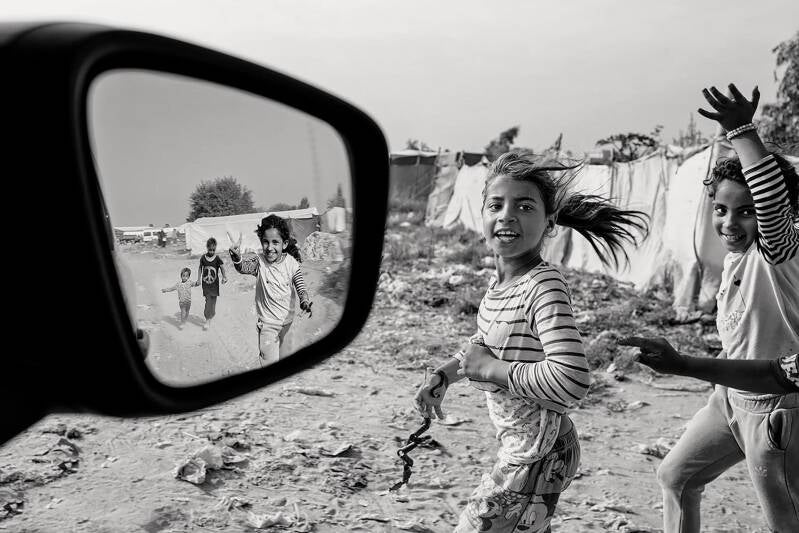
The Play of Resistance. Amidst the muddy ground and makeshift shelters, the children's laughter becomes the greatest act of resistance. Their joy fiercely holds on to the memories and roots they left behind.
The southern regions of Turkey have witnessed one of the largest migration waves in recent decades. Thousands fled cities destroyed by war, crossing the border in search of safety. They carried little with them—perhaps a few belongings, a photograph, or a child’s toy. What they left behind were not only their homes, but their memories, families, and roots.
Arriving in a new country was both salvation and struggle. Tent camps, makeshift shelters, crowded settlements—these became their new reality. “At least there is no fear of death,” many would say. That simple sentence reveals the deepest scar of war: survival itself becomes the only measure of hope.
Life in the camps was a battle against every season. The searing heat of summer and the freezing cold of winter pierced easily through thin tent walls. Electricity was often absent. Water had to be carried long distances. Children played on dusty ground, sometimes surviving on just one meal a day. And yet, they laughed. Play became their greatest act of resistance.
Men spent long hours working wherever they could—in construction, in fields, in markets. The wages were low, the labour harsh, but there was no alternative. Children needed food, medicines had to be bought. Women not only kept the home but also joined the labour force when needed, all while caring for the young.
Migration was not just a change of place—it was a test of identity. To be “a foreigner” in a country whose language and culture you did not know meant an even deeper loneliness. Many children were deprived of schooling; those who did attend often struggled with language barriers, leaving them at a disadvantage.
Still, migrants found ways to hold on to life. Teapots boiling in front of tents, children turning plastic bottles into toys, mothers sewing clothes by hand—these were signs that life could be rebuilt. Communities formed their own networks of solidarity, helping each other when illness or hardship struck.
Over time, some families left the camps and moved into towns. They rented run-down houses, worked as unskilled laborers. It was a step out of invisibility, an attempt to belong. But it also brought prejudice and discrimination. Children struggled in schools, women faced barriers to employment, men were forced to accept low pay.
Migration did not only reshape the lives of those who fled; it also transformed the host society. In the streets of southern cities, Arabic signs appeared, new food aromas filled the air, and migrant-run shops became part of the landscape. Diversity enriched culture but also stirred tensions over shared resources.

The Sustainability of Life. Despite harsh seasons and impossibilities, a mother prepares the family’s daily bread in front of her tent. This is not just a meal; it is an act of survival and the continuous preservation of hope.
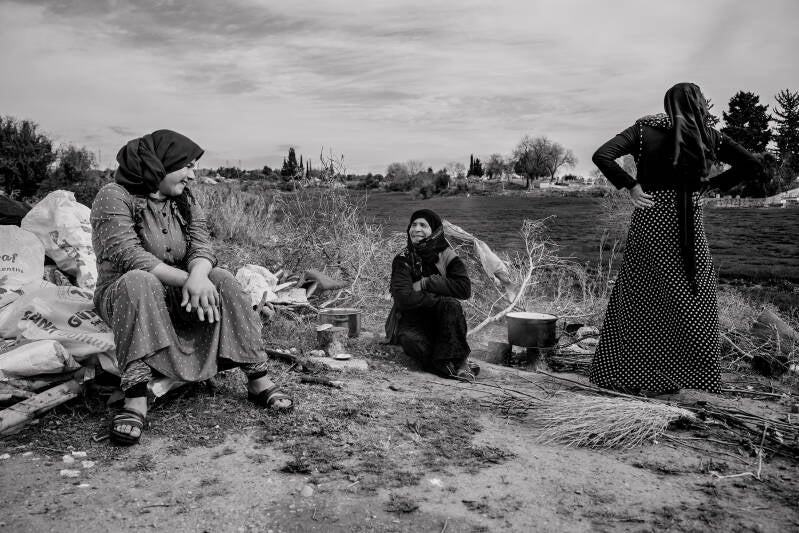
Strength from the Earth. As women manage both housework and labour, they take a brief pause amidst the difficult living conditions. This is more than a break; it demonstrates the community's spirit of solidarity and rebuilding.
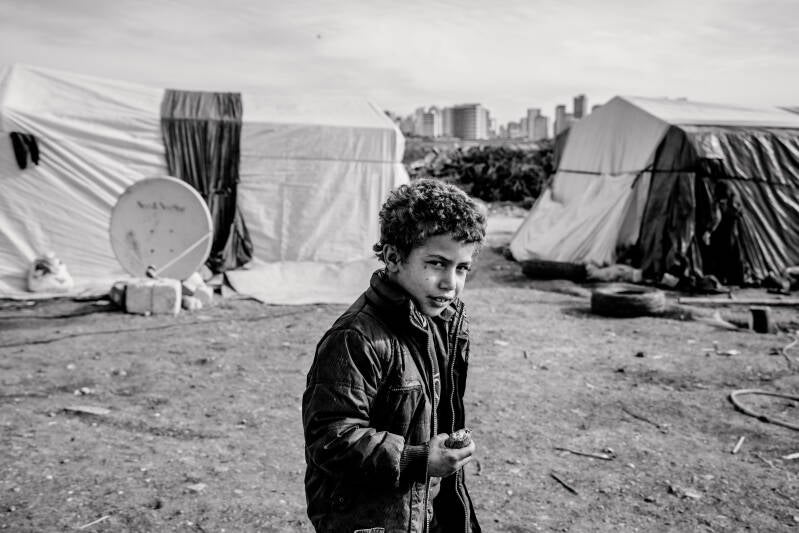
The Face of Contrast. A child stands amongst the makeshift tents, close to the modern city skyline. The questioning looks in his eyes clashes the uncertainty of their refuge with the universal desire to belong.

My Father's Hand. An adult man and a small child. In this difficult living space, the protective act of the father figure provides the safety and connection children need, beyond just basic necessities.
Today, thousands still live in tent camps. Some have been there for years, their lives frozen in a sense of impermanence. And yet they continue to live, to feed their children, to search for work, to hope. Hope may be the only thing left unbroken among the ruins of homes and shattered lives.
The story of migrants is, in truth, the story of humanity. Any of us could one day become migrants—because of war, climate change, or economic collapse. The desire to belong, to put down roots, is universal. That is why we should see migrants not only as “foreigners” but as possible reflections of ourselves. In their children’s laughter we can recognize our own, in the fatigue of their mothers our own mothers, and in the darkness of their tents our own fears. Because the story of migrants is not theirs alone—it is the story of us all.

The Weight of the Ground. Despite the chaotic settlement around him, a child sits on the earth. His posture and direct gaze show that migration is not just a change of place — it is a test of identity.

Future and Past. In the foreground, a hopeful smile and a baby’s curious face; in the background, a mother sits on the ground holding an infant. Migration is a cycle swinging between the burden of the old life and the hope for a new beginning.
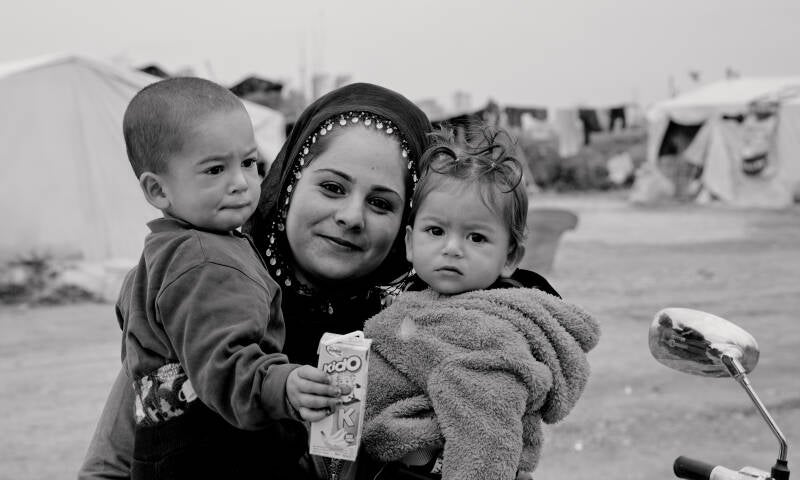
The Power of Mothers. A young mother holds her two children. Amidst a life of impermanence, mothers not only keep the home but also join the labour force while caring for the young.
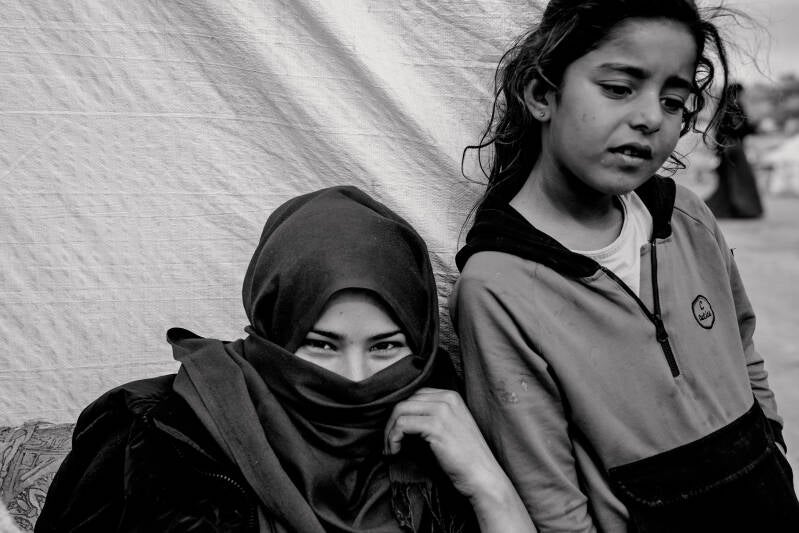
The Hidden and the Visible. Two young women stand before the tent canvas. One is partially concealed; the other looks away with open eyes. A silent struggle against the deeper loneliness brought by language and cultural barriers.

The Face of Resilience. An elderly woman sits at the entrance of her tent. Her eyes bear the scars of the deepest wound of war: survival itself. She is the silent witness to the roots and memories left behind.
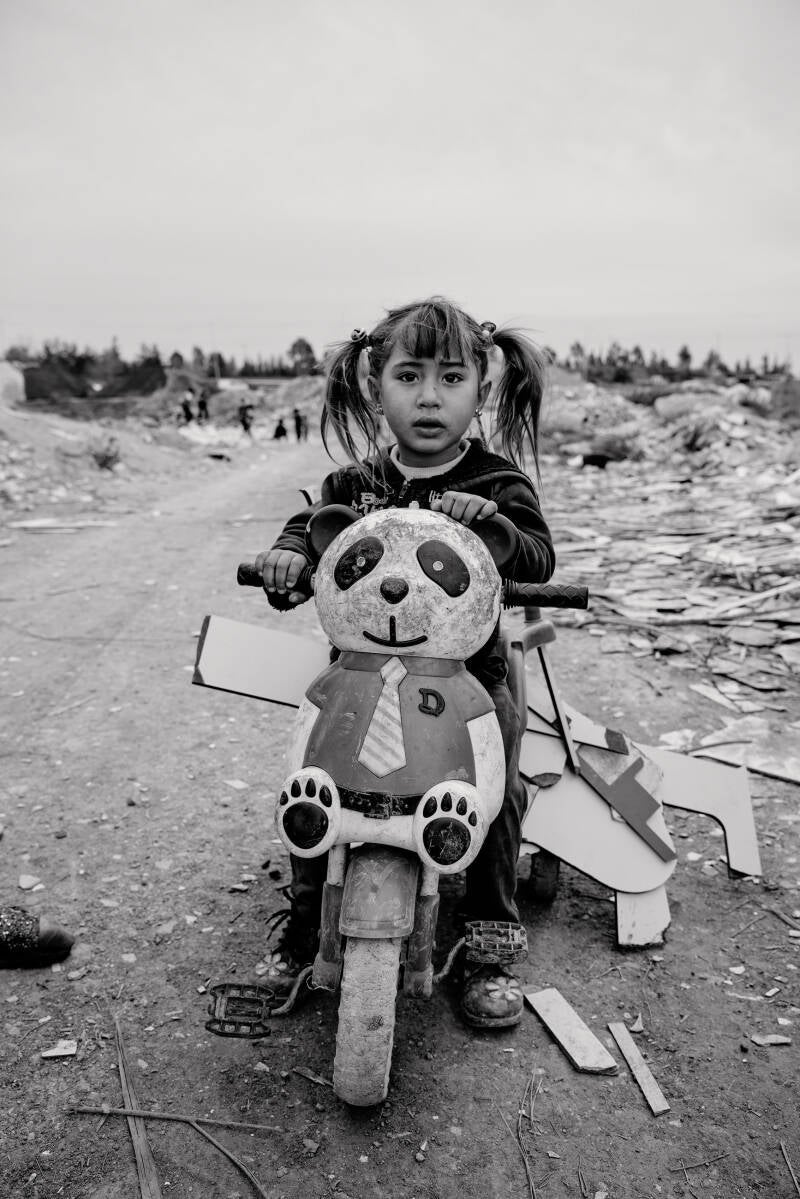
Play and Ruin. A girl on a toy motor bike rides on a dirt road surrounded by rubble and debris. Play has become the greatest act of resistance and a necessary escape route for these children against harsh conditions.

Beyond the Visible. A child looks at the viewer through a mesh screen. The deep loneliness of being a 'foreigner' makes the search for roots even harder in a country whose language and culture are unknown.

The Frame of Innocence. A child looks out from the opening of the tent. The fairy tale images in the background highlight the thin line between reality and imagination; childhood preserves its innocence even in the harshest shelters.

Children of the Earth. A group of children stand on a dry, barren land. Although their lives have been frozen in a sense of impermanence for years, this group portrait symbolizes their strength as a community, holding on to one another.